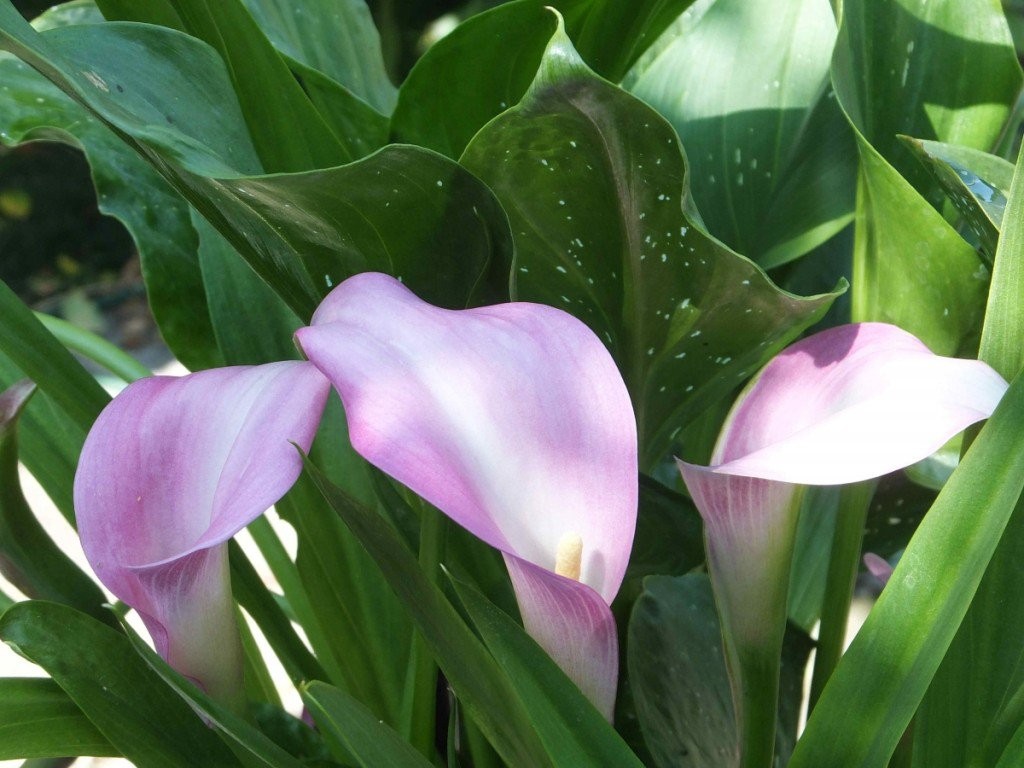
You could use your greenhouse to force pots of our native Arum maculatum lilies, the wild Lords & ladies or Cuckoo-pints. These are known for their clumps of glossy hosta like leaves and distinctive early spring flowers; each with a yellow spathe in the middle of a surrounding white spadix, later superceded by a stick of glossy bright red berries (all parts are poisonous).
These Arums are usually found in damp often shady places and are pollinated by flies so their scent is not to most people’s taste. Interestingly the spathe is actually warmed by the plant, presumably to either spread the ‘perfume’ further or to warm up the flies.
There is a similar Italian version, Arum Italicum, somewhat larger and not so reliably hardy. But much much finer, and far more elegant relations are the other Arum or Calla lilies, Zantedeschia aethiopica. These benefit from not carrying that same ‘fly perfume’ instead they often have a light but much pleasanter scent especially the white ones. There’s an old favourite variety ‘Crowborough’ which can survive many winter’s outside in a favourable spot but most Callas really are plants just for the frost free greenhouse or conservatory. With attractive foliage out of flower these bloom with a range of colours from white and cream through pinks and Burgundy to an almost black purple. These blooms, on long stems of a foot or more stand well and so also make really excellent cut flowers.
Once known as Richardia Africana, Calla lilies come from the warm wet swamps of tropical Africa which indicates their preferences. These are one of those few plants that can safely be stood in a saucer of water! Indeed doing the growing season they need such and very regular watering (though they recover from the odd inadvertent temporary drought mishap fairly well so don’t panic). Apart from needing rather wet compost they prefer a rich but light one and benefit from a weekly feed with a general purpose liquid fertiliser added to their water. They are not very prone to most greenhouse pests though slugs can disfigure their leaves if not guarded against and red spider mite can be a problem if they get hot and dry and they do enjoy a misting if the weather is very hot. Indeed they are often most comfortable in dappled shade rather than full sun especially if the ventilation is not sufficient.
However generally they are remarkably trouble free all growing season just needing drying off and putting aside from autumn till early spring when they can be restarted (leave them in their pots of compost but lay these on their side so they are not accidentally watered). It is usually recommended to divide their large rhizomes every few springs and to pot these on separately for better flowers especially if desired for cutting. But for greenhouse specimens in big pots and tubs they can be left to form huge congested clumps giving perhaps fewer smaller blooms but looking most impressive.


